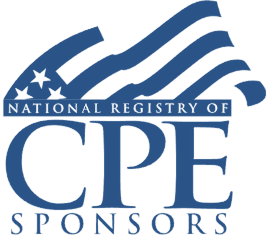- videocam On-Demand Webinar
- signal_cellular_alt Intermediate
- card_travel Corporate Tax
- schedule 110 minutes
State Taxation on the Sale of Pass-Through Entity Interests
Sourcing Issues, Tiered Entities, Apportionment vs. Allocation, Residents vs. Nonresidents, Circumventing the SALT CAP
Welcome! Save 30% on all CLE, CPE, and Professional Skills webinars, plus 15% off any annual pass with code HOLIDAY25
About the Course
Introduction
This webinar will explain the issues practitioners encounter when reporting and taxing the sale of an interest held in a pass-through entity (PTE). Our panel of SALT veterans will discuss how types of owners, residency, and various state approaches (or lack thereof) impact these calculations, including examples of taxation in specific states.
Description
Determining how and if the 50 states and D.C. tax income is difficult enough. SALT professionals are responsible for matching income from the sale of PTEs into existing, nonexisting, and vague state criteria.
Most states separate income into business (apportionment) and non-business (allocable) income categories. However, even states that use these classifications differ in their definitions of business and non-business income. Add to this problem the fact that owners of these entities may be residents or nonresidents, individuals or entities, or even more problematic, tiered entities.
A new consideration is the prospect of paying tax on the sale at the entity level. Many states have adopted entity-level taxes to circumvent the SALT cap. Paying tax at the entity level on these sales could significantly reduce the tax burden for these entities' owners.
Listen as our panel of SALT experts discusses the standard methods states employ to tax the sale of partnership and S corporation interests. They will discuss determining nexus, sourcing issues, and asset sales vs. stock sales, as well as how the new ability to pay tax at the entity level in many states impacts state taxation of the sale of PTEs.
Presented By

Ms. Arasu has more than 15 years of state tax consulting experience within a public accounting environment and concentrates on income and franchise tax issues such as nexus, state tax base modifications, apportionment of income, business/non-business income, unitary taxation, gross receipt taxes, allocation of partnership items, and state filing options. Ms. Arasu consults on all aspects of state income tax, including participating in M&A transactions, due diligence reviews, representation on state tax controversy matters, and assisting companies with state tax compliance and state tax accrual reviews. She has worked with Fortune 1000 and mid-size companies in industries such as manufacturing, retail, healthcare, hospitality, real estate, technology, and transportation.

Mr. Spengler's main area of focus is state income and franchise taxes with significant experience in the design and implementation of legal entity structures that are more tax efficient. As a result of his unique background, he has had success in designing structures that both minimize the impact on his client’s operations while maximizing the tax savings received by the client. Mr. Spengler specializes in the design of structures that both complement the client’s underlying business and provide diversified tax savings. As such, he has successfully designed structures for clients that simultaneously reduce state income tax, Single Business Tax, franchise tax, sales & use tax and federal income tax while logically fitting within the way the business operates. In addition to restructuring work, Mr. Spengler also has significant experience with the analysis of tax return positions and with the subtle interaction between the Federal income tax framework and its impact on a client’s state income tax reporting. He has had a great deal of success with securing significant refunds for clients related to gray and misunderstood areas of the tax law.
-
BARBRI is a NASBA CPE sponsor and this 110-minute webinar is accredited for 2.0 CPE credits.
Date + Time
- event
Friday, May 17, 2024
- schedule
1:00 p.m. ET./10:00 a.m. PT
- Flow-through entities
- Determining nexus
- Determining state taxable income
- Specific sourcing issues
- Gain on sales of interests
- Classification as an asset sale
- Sales of intangibles
- Other issues
- Other entity-level taxes
- Circumventing SALT cap
The panel will review these and other critical issues:
- How asset sales and stock sales treatment differs among states
- How residency impacts state reporting of disposition income
- How ownership type (individual, entity, tiered entity) affects state taxation of PTEs
Learning Objectives
After completing this course, you will be able to:
- Distinguish between asset and bulk sales
- Differentiate how ownership affects state taxation of PTEs
- Recognize the differences between business and non-business income
- Determine how the apportionment rules apply
- Understand the correct approach to sourcing in a tiered PTE structure
- Field of Study: Taxes
- Level of Knowledge: Intermediate
- Advance Preparation: None
- Teaching Method: Seminar/Lecture
- Delivery Method: Group-Internet (via computer)
- Attendance Monitoring Method: Attendance is monitored electronically via a participant's PIN and through a series of attendance verification prompts displayed throughout the program
- Prerequisite: Three years+ business or public firm experience preparing complex tax forms and schedules and supervising other preparers or accountants. Specific knowledge and understanding of SALT taxation, nexus and apportionment, as it applies to multi-state businesses.

BARBRI, Inc. is registered with the National Association of State Boards of Accountancy (NASBA) as a sponsor of continuing professional education on the National Registry of CPE Sponsors. State boards of Accountancy have final authority on the acceptance of individual courses for CPE Credits. Complaints regarding registered sponsons may be submitted to NASBA through its website: www.nasbaregistry.org.

BARBRI CE webinars-powered by Barbri-are backed by our 100% unconditional money-back guarantee: If you are not satisfied with any of our products, simply let us know and get a full refund. Contact us at 1-800-926-7926 .
Unlimited access to premium CLE courses:
- Annual access
- Available live and on-demand
- Best for attorneys and legal professionals
Unlimited access to premium CPE courses.:
- Annual access
- Available live and on-demand
- Best for CPAs and tax professionals
Unlimited access to premium CLE, CPE, Professional Skills and Practice-Ready courses.:
- Annual access
- Available live and on-demand
- Best for legal, accounting, and tax professionals
Unlimited access to Professional Skills and Practice-Ready courses:
- Annual access
- Available on-demand
- Best for new attorneys
Related Courses

Commonly Overlooked State Tax Credits and Incentives: R&D, Investment, Jobs Tax Credits, and More
Tuesday, January 20, 2026
1:00 p.m. ET./10:00 a.m. PT

State Responses to OBBBA Treatment of R&D Expenses: Conforming and Nonconforming States
Tuesday, February 17, 2026
1:00 p.m. ET./10:00 a.m. PT



